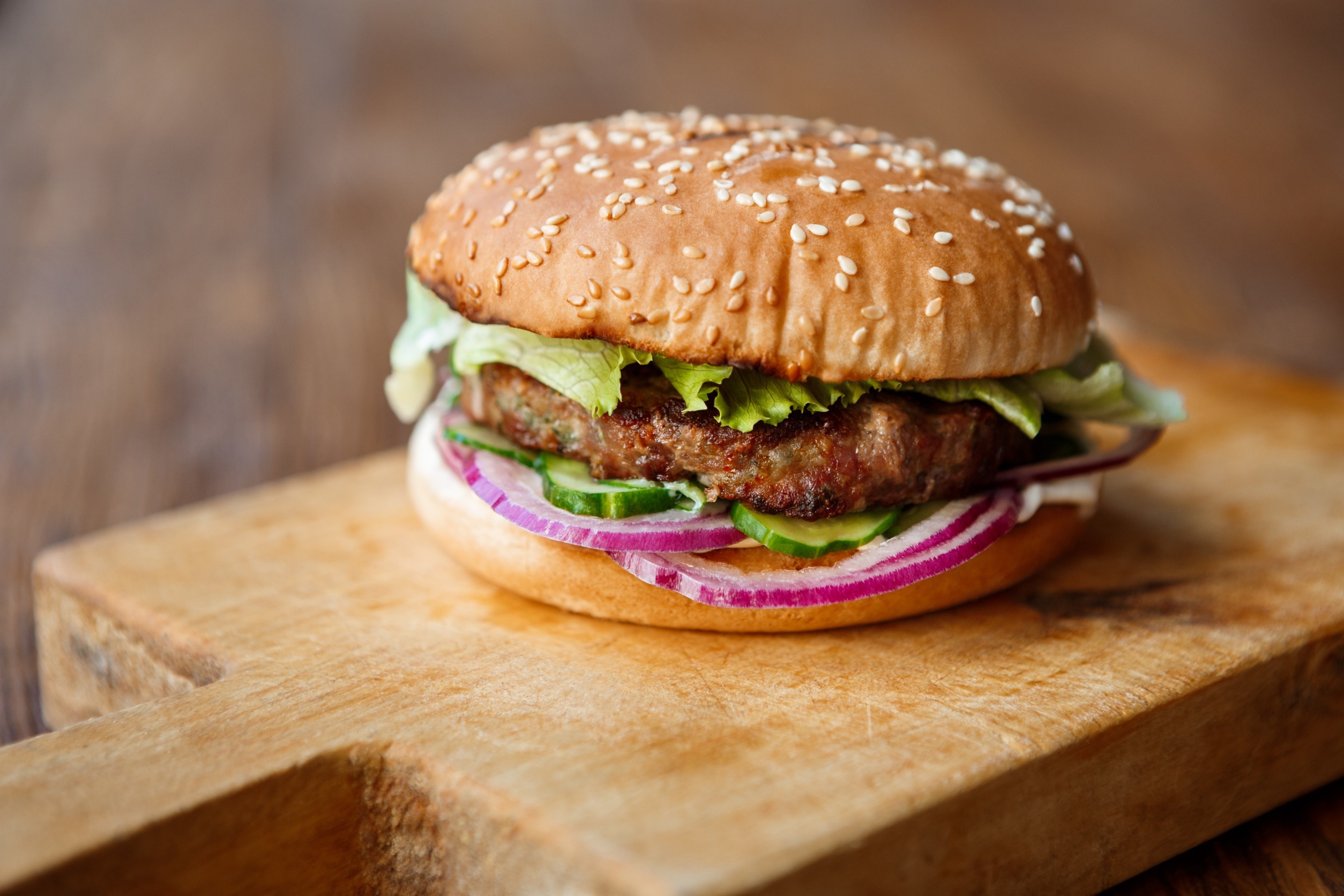
I cannot really imagine a great pharaoh like Rameses II or the Roman emperor Caligula getting their canines into a meat pattie (patty) like a beefburger but it is possibly not that far from the truth. The history of beefburgers is a fascinating journey through time, reflecting the evolution and development in meat consumption and culinary practices across various cultures. While the modern beefburger is a distinctly American invention as we can all vouch for if you have ever visited the States, its roots can be traced back through centuries of meat preparation techniques and the dishes that laid the groundwork for what we know and love today.
I mention pharaoh as the ancient Egyptians were significantly involved in the development of beefburgers. Not directly mind but its significant. The ancient Egyptians were among the first to domesticate cattle around 8,000 years ago. They developed sophisticated methods for butchering and preparing meat, which included grinding meat into patties. Although these patties were not beefburgers as we might know them today based on hieroglyphs, they were an early form of minced meat preparation that contributed to the later development of meat patties. Residues from ancient tombs suggest prepared foods including patties containing herbs were offered for the journey into the afterlife.
The ancient Romans took this concept of minced meat further. They were known for their culinary creativity and often prepared a dish called “Isicia Omentata.” This was a patty made from minced meat, usually pork or beef, mixed with pine nuts, pepper, wine-soaked bread, and a variety of seasonings. There was most likely garum too. These patties were then fried or baked, resembling a rudimentary form of the hamburger patty.
The Roman method of preparing minced meat patties and their influence on European culinary practices certainly helped to lay the foundation for the later development of the hamburger. These techniques were carried through the centuries and adapted by various cultures, eventually leading to the creation of the modern hamburger.
The development of the burger into its modern form starts in medieval Europe. There is a tradition of minced meat patties being eaten as a type of early street food. They were also consumed on the Crusades and some of the ideas such as the addition of onion may well have come from the eastern Mediterranean. Various recipes for minced meat dishes existed and have been recorded in manuscript, again often made with a mixture of meats and spices including sage, rosemary and thyme. The ‘Hamburg Steak’ then takes centre stage. In the 18th and 19th centuries, the “Hamburg steak” became popular in Germany and in many senses is really the true beefburger invention although we should look to pork as the meat of choice. This dish was consisting of minced beef formed into a patty and cooked. It is often cited as a direct precursor to the modern hamburger.
The American influence is where we see the concept of the classic fast food. German immigrants brought the Hamburg steak to the United States in the 19th century. The dish evolved in the American culinary landscape, particularly during the late 19th and early 20th centuries, when it began to be served between slices of bread or a bun. This transformation is often credited to various individuals and establishments, leading to the creation of the modern hamburger.
If you have ever read web-sites and texts on who created the first American hamburger joint then you will be confronted with claim and counterclaim. Who ever invented it, the hamburger gained widespread popularity in the United States, particularly with the rise of fast food chains in the 20th century. The White Castle chain, founded in 1921, was one of the first to standardize and mass-produce hamburgers, making them a staple of American cuisine.
We then have the introduction of a weight and measure which is synonymous with burgers – the 1/4 pounder and the 1/2 pounder. A 1/4 pounder is substantial with all those famous additions like onions, ketchup, lettuce, dill pickle but try a 1/2 pounder and you know what a lead weight feels in the tummy. Yes, it may seem ridiculous to eat so much but the larger weight is the definition of a hearty meal!
Here’s a recipe for making six 1/4-pound beefburgers using a blend of chuck and flank steak and simply seasoned with salt and pepper. If you like why not try a smidge of Worcestershire Sauce to really add a bit of spice to this classic patty. The recipe includes all the necessary equipment, as well as detailed preparation and cooking times.
[Please note we are an affiliate marketing partner and will make a sales commission if you purchase any items through our affiliate links. Please read our affiliate disclosure]
Equipment Needed
- Meat grinder or food processor
- Large mixing bowl
- Knife and cutting board
- Measuring spoons
- Digital kitchen scale (optional, but helpful)
- Grill or stovetop skillet/griddle
- Spatula
- Meat thermometer (optional, for checking doneness)
Preparation Time
- 20 minutes
Cooking Time
- 10-12 minutes
Ingredients
- 1 pound chuck steak
- 1 pound flank steak
- 1 teaspoon salt
- 1/2 teaspoon black pepper
- 1 tablespoon Worcestershire sauce (optional)
- Burger buns
- Desired toppings (lettuce, tomato, cheese, pickles, onions, etc.)
Preparation
1. Prepare the Meat
- Trim and Cut the Meat: Trim any excess fat and sinew from the chuck and flank steaks. Cut the meat into small chunks suitable for grinding.
- Grind the Meat: Using a meat grinder or food processor, grind the chuck and flank steak chunks together until you achieve a coarse grind. If using a food processor, pulse the meat in small batches to avoid over-processing.
- Mix the Ingredients: Place the ground meat into a large mixing bowl. Add the salt, black pepper, and Worcestershire sauce (if using). Mix gently with your hands until well combined, being careful not to overwork the meat.
2. Form the Patties
- Divide the Meat: Divide the meat mixture into 6 equal portions (approximately 1/4 pound each).
- Shape the Patties: Gently shape each portion into a patty about 1/2 inch thick. Make a small indentation in the center of each patty with your thumb to help them cook evenly and prevent puffing up.
3. Cook the Burgers
- Preheat the Grill or Skillet: Preheat your grill to medium-high heat or your skillet/griddle over medium-high heat.
- Cook the Patties: Place the patties on the grill or in the skillet. Cook for about 4-5 minutes per side, flipping only once, until the internal temperature reaches 160°F (71°C) for medium doneness. Adjust cooking time if you prefer them more or less done. If the beefburgers are frozen, make sure they are thoroughly defrosted beforehand.
- Rest the Patties: Remove the patties from the heat and let them rest for a couple of minutes before assembling the burgers. This helps the juices redistribute within the meat.
- To Barbecue: For more authentic flavour and appearance, just cook as you would with the grill and then transfer immediately onto a barbecue and cook until browned. Ensure product is cooked thoroughly until juices run clear and there is no raw meat inside.
- Safety Notes: Check food is piping hot throughout, all juices run clear and no pink colour remains. All cooking appliances vary. This recipe is suitable for rare cooking if the meat is high quality. I would advise to not undercook burgers. Keep raw meat separate from cooked foods. Use separate kitchen utensils and surfaces for raw meat and cooked foods or wash them thoroughly between use. Wash hands after handling raw meat. Raw meat may contain organisms hazardous to health. Cook thoroughly until piping hot throughout, no pink colour remains and the juices run clear. If not fully cooked in accordance with the instructions harmful bacteria may remain.
4. Assemble the Burgers
- Toast the Buns: If desired, toast the burger buns on the grill or in a toaster for added texture and flavor.
- Add Toppings: Place each patty on a bun and add your desired toppings. Popular options include lettuce, tomato, cheese, pickles, onions, ketchup, mustard, and mayonnaise.
Serving
Serve the burgers immediately while hot, accompanied by your favorite sides such as fries, coleslaw, or a fresh salad. You could serve them in the own individual cardboard container like they do at the fast food outlets.
Storage
For best quality, freeze as soon as possible after preparing if not intending to use immediately. Use within 3 months. Defrost thoroughly.

Leave a Reply